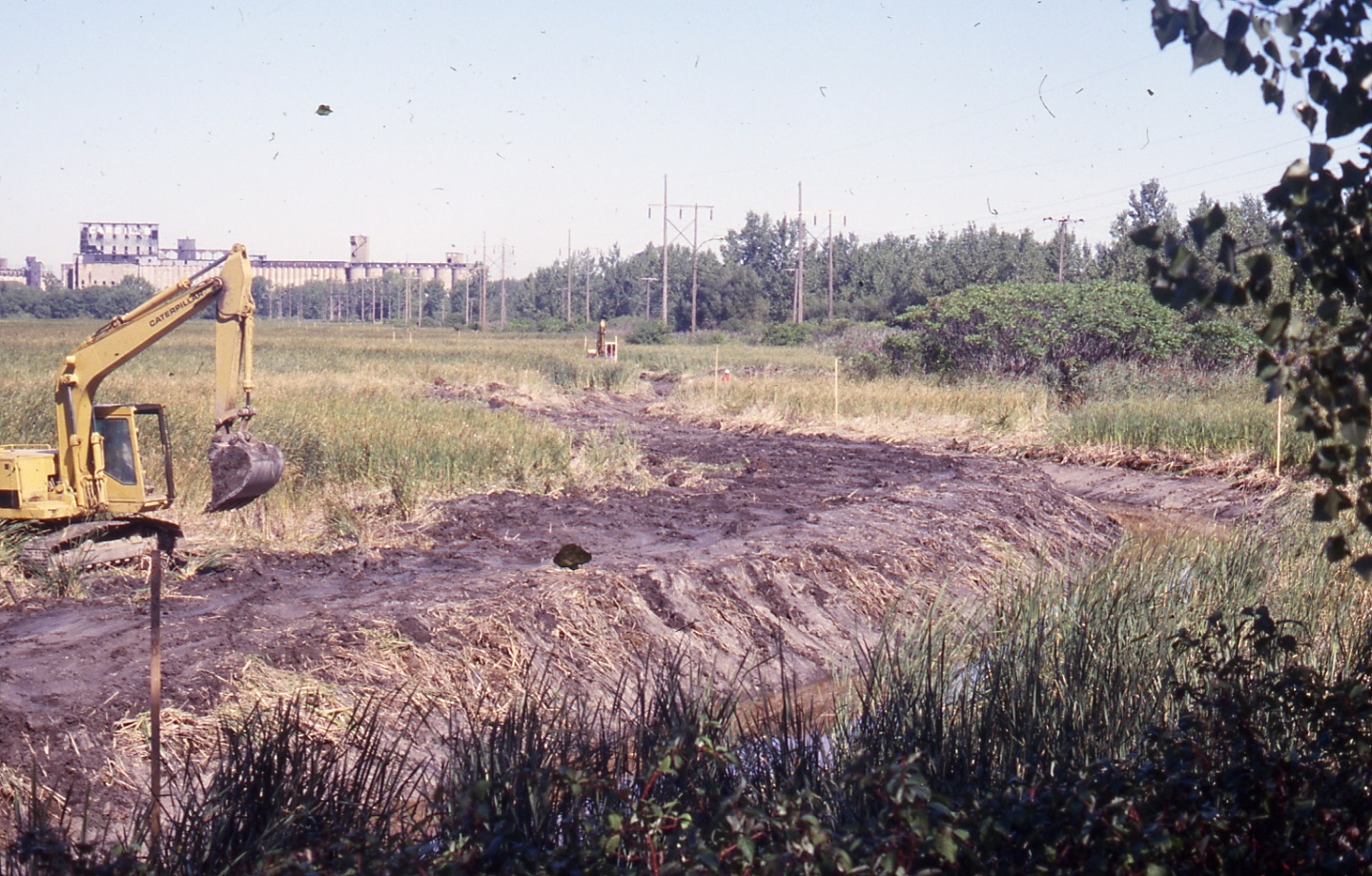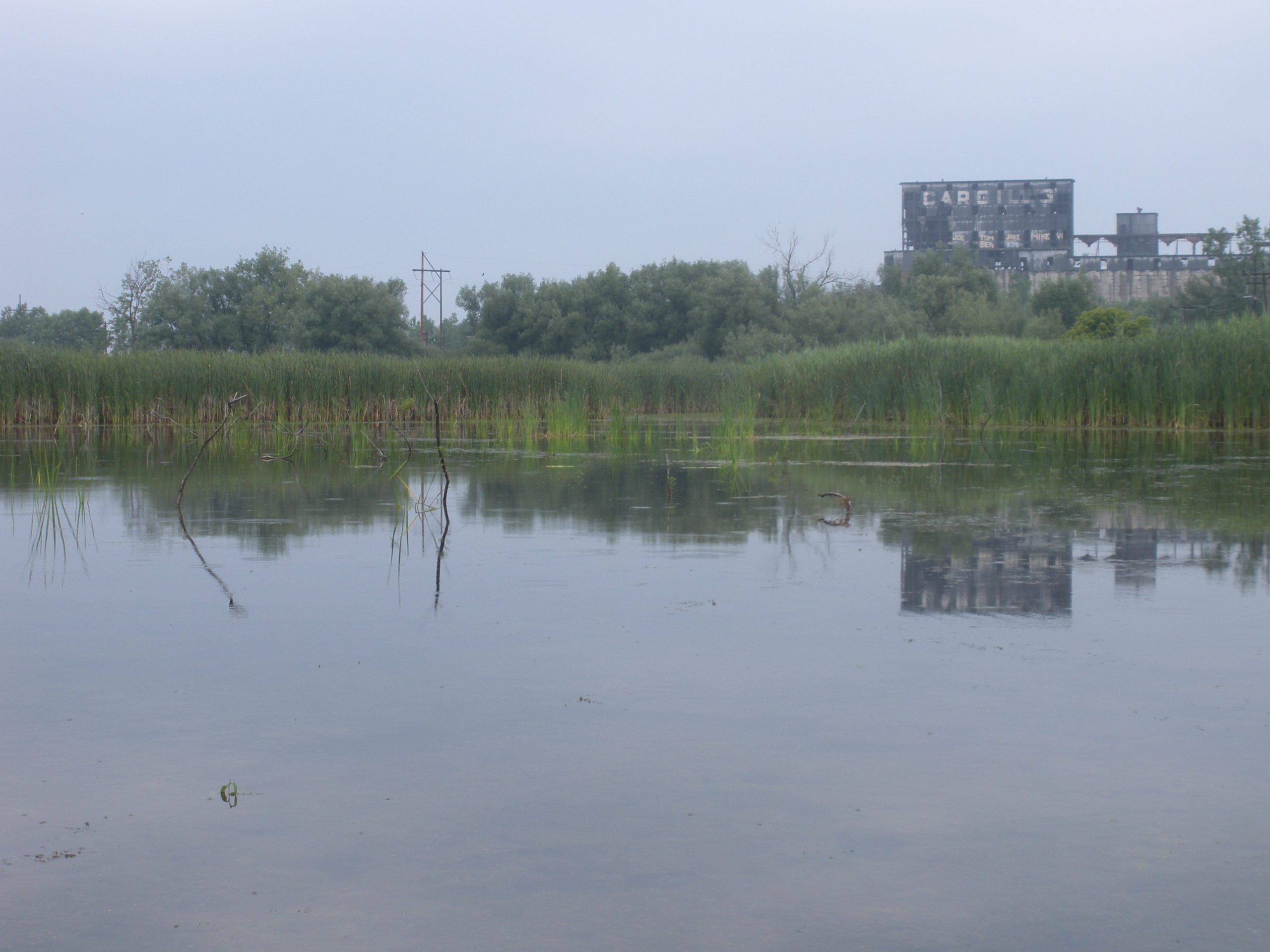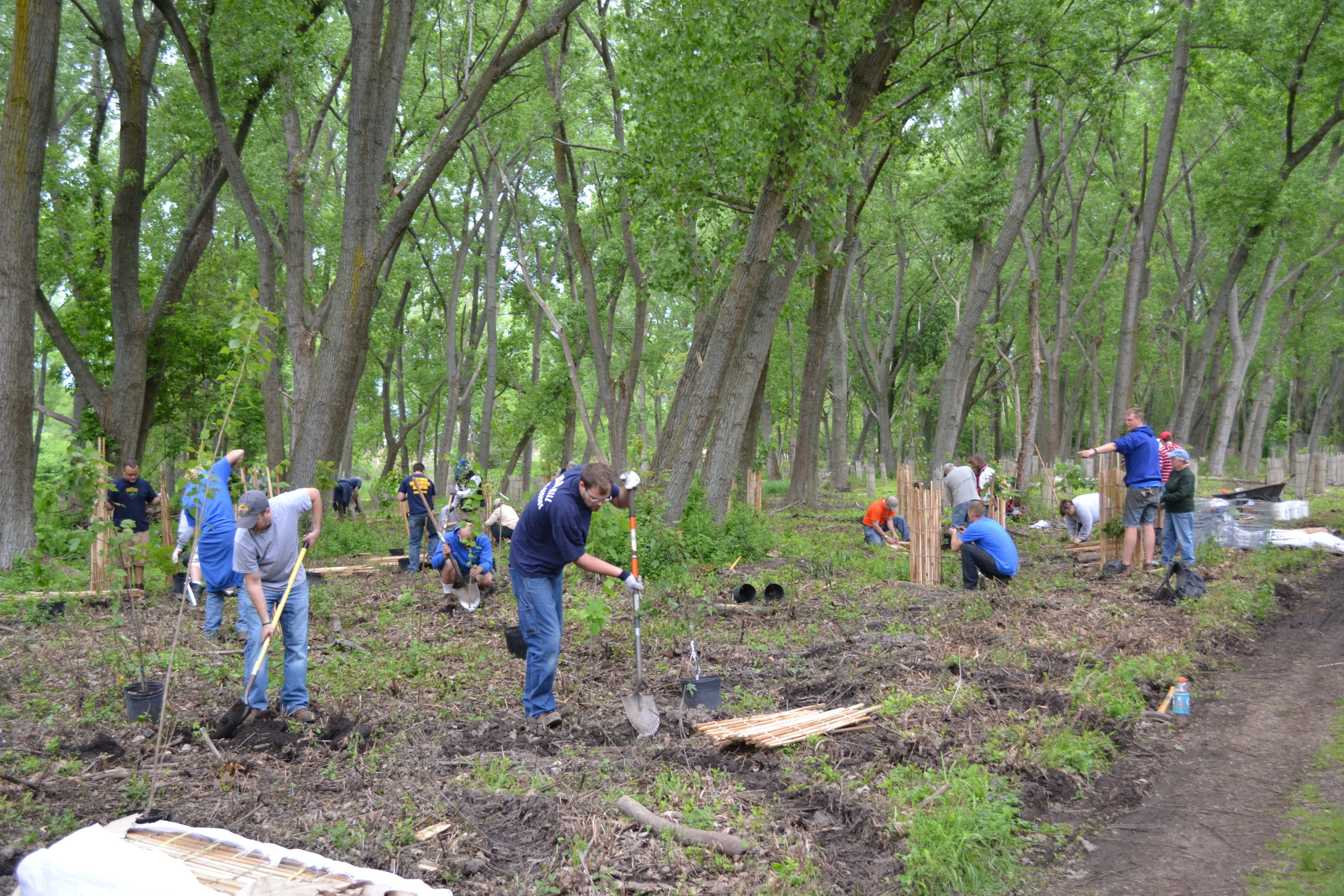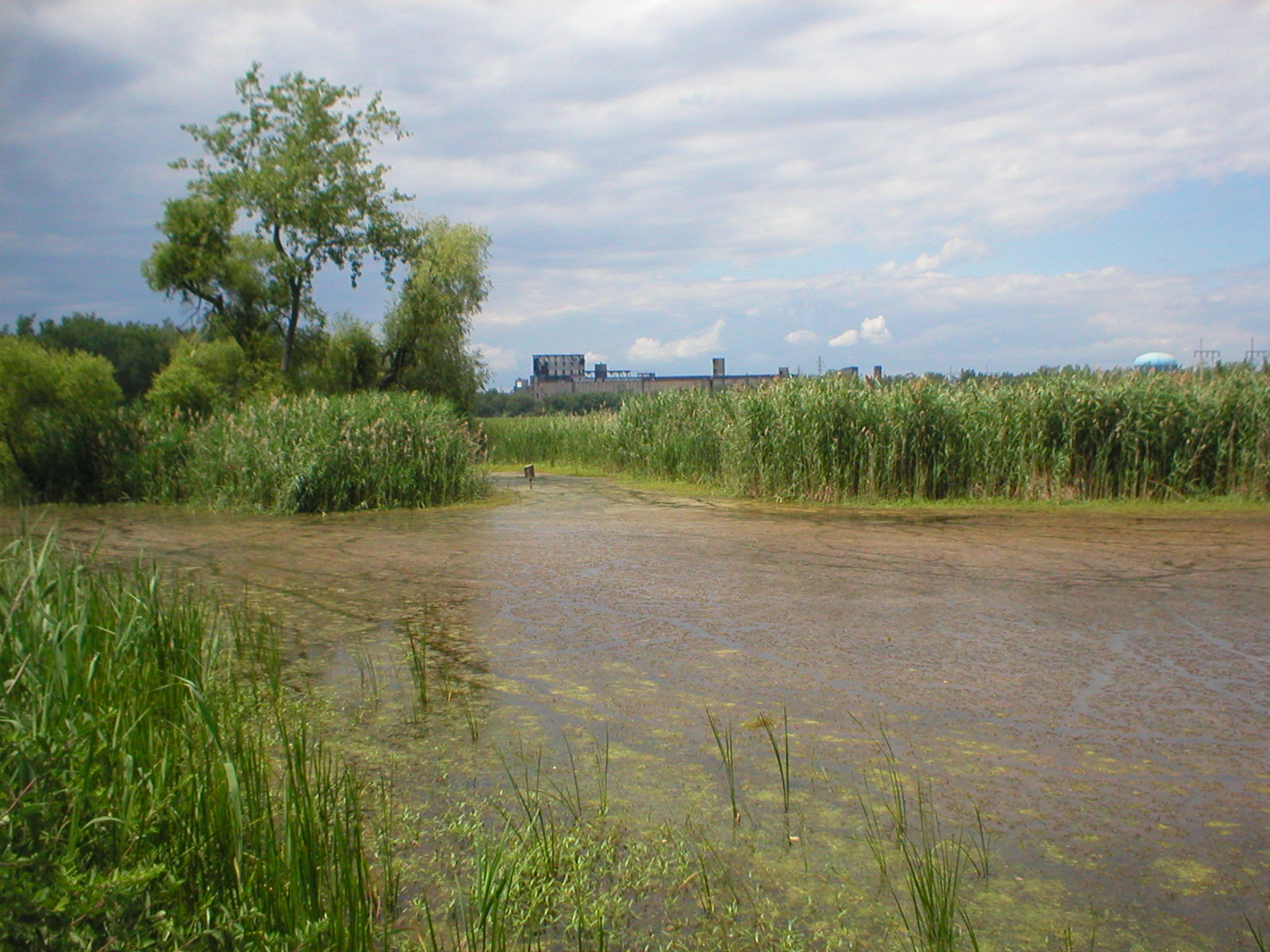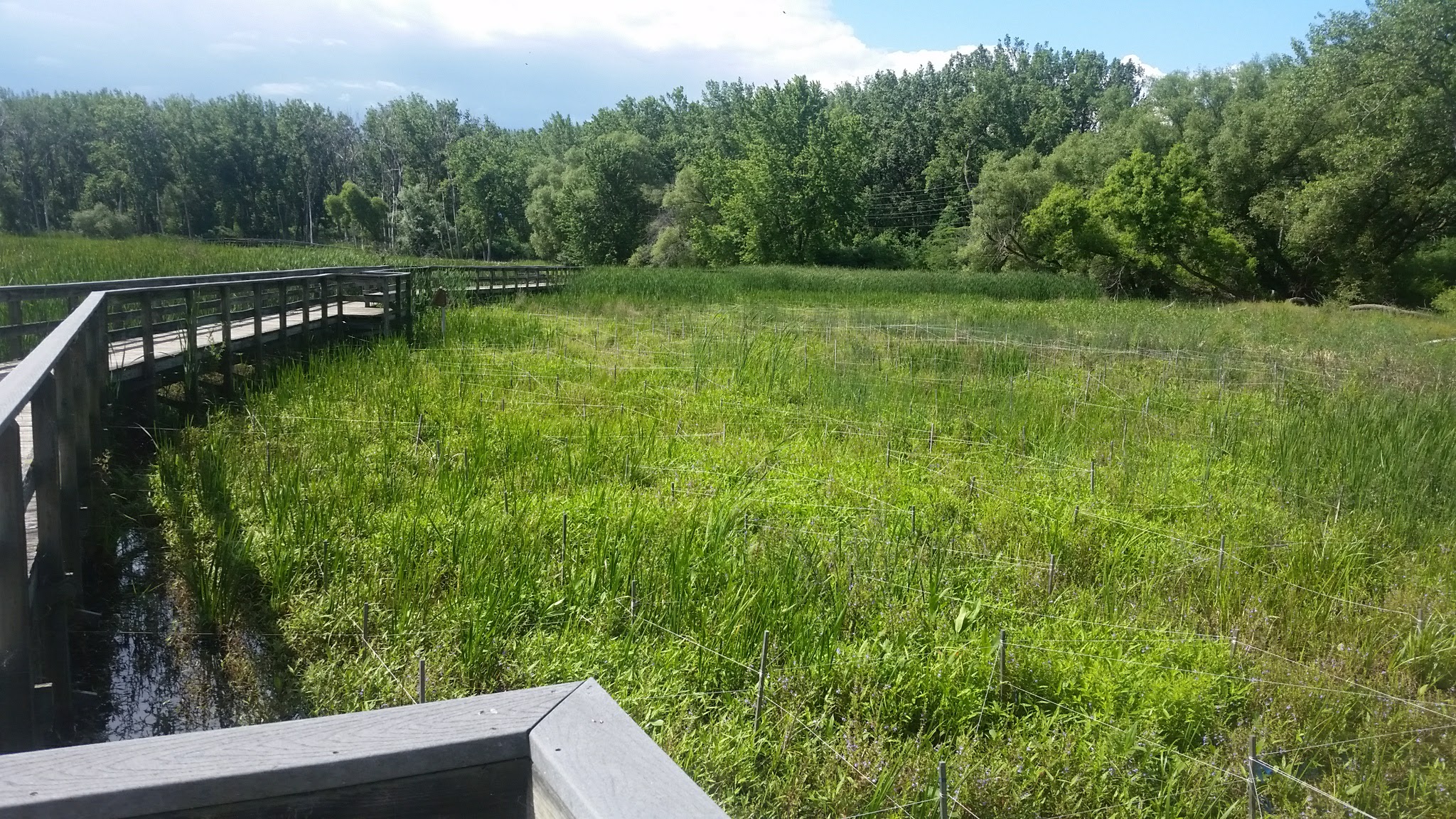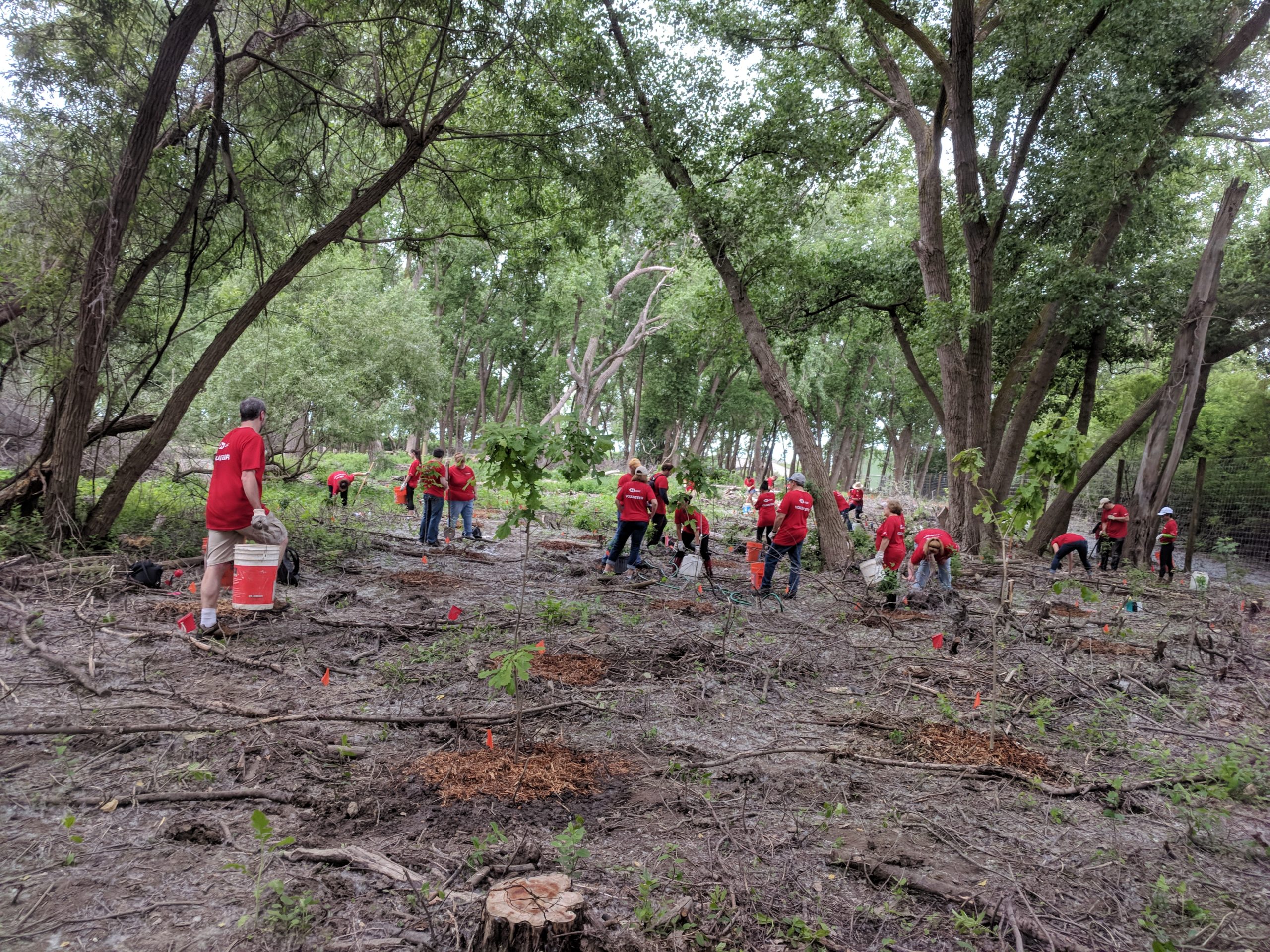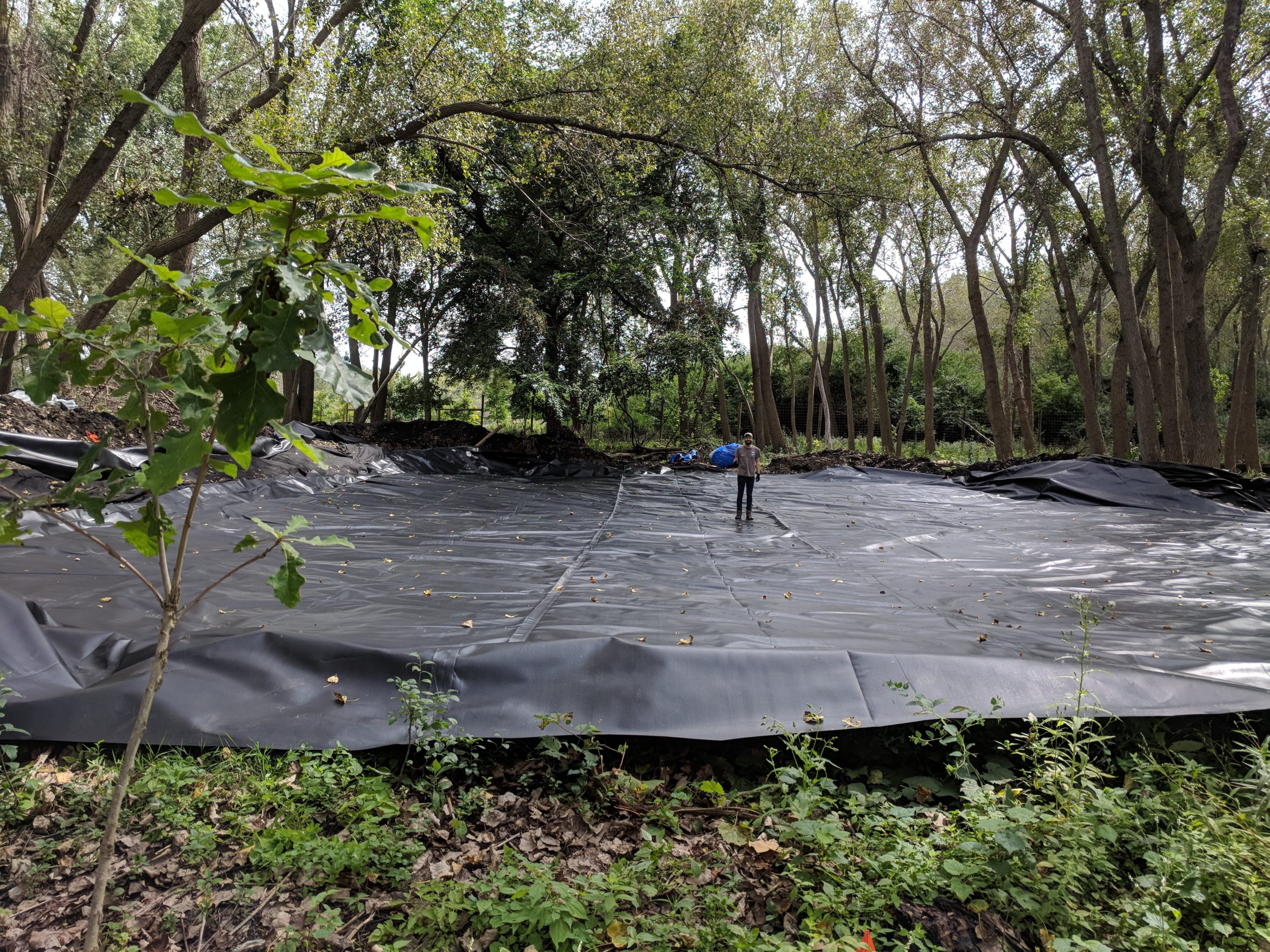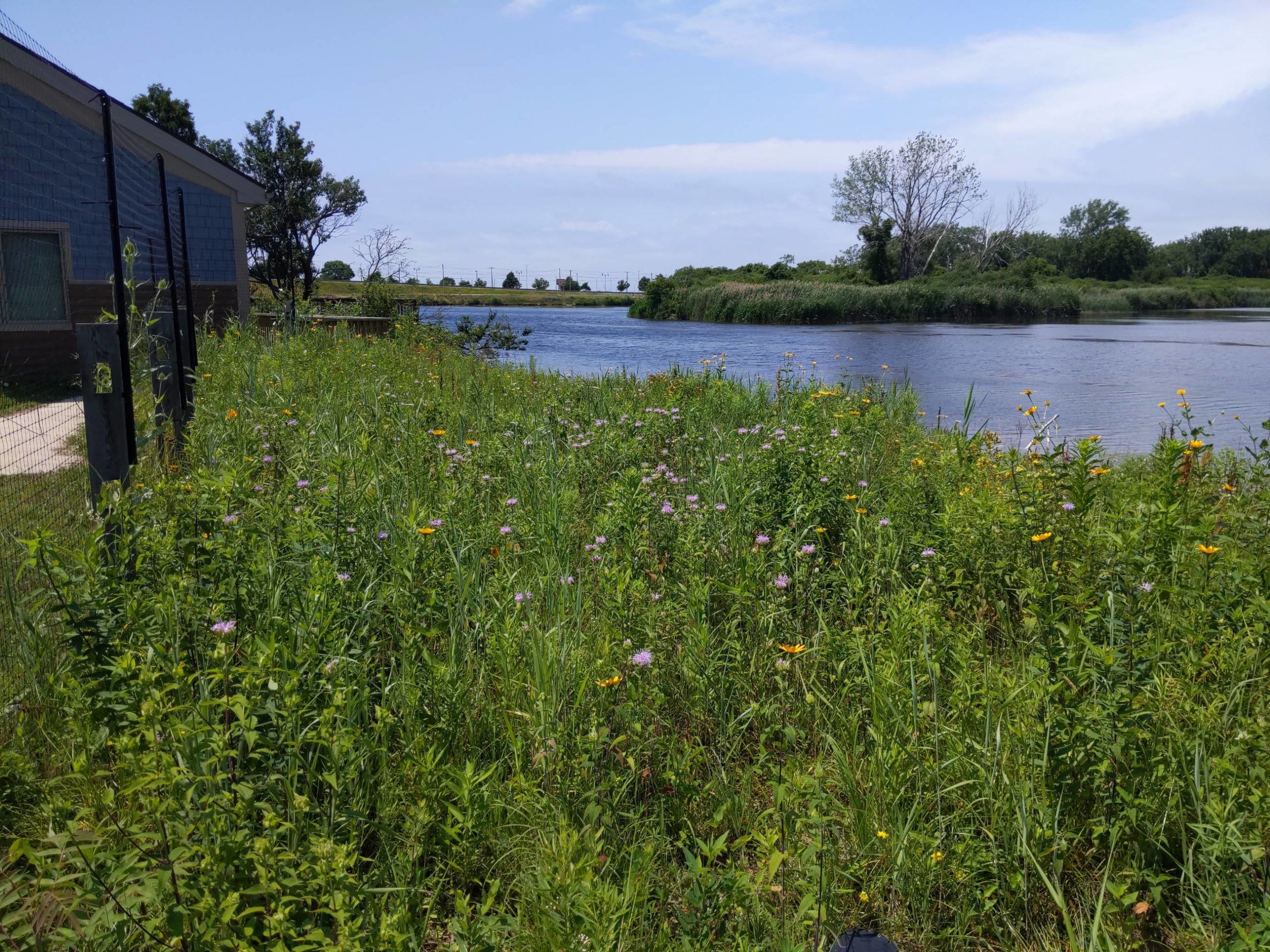EDUCATION CENTER HOURS:
- Home
- Ecological Management
- Ecological Management Strategy
- Timeline of Ecological Management...
Ecological Management Timeline
1975: Development of master plan for the establishment of Tifft Nature Preserve
This document laid out plans for development of a trail system, ecological management, and staffing for administration, programming, and management.
1975-1983: Revegetation of The Mounds and Lake Kirsty shoreline
Following the completion of the transfer of municipal waste from Unity Island to present-day Tifft Nature Preserve. The Tifft Farm Technical Advisory Committee developed a revegetation plan. The mounds were seeded and planted with pasture grasses, shrubs, and trees.
This plan was systematic and ambitious, but more realistic than establishment of a mesic forest as suggested by the 1975 master plan. Many exotic species were used as part of this planting plan, in-line with best practices and availability of the time, but unfortunately, several of those species are considered invasive today and are established within the preserve.
1977: Creation of Berm Pond, and expansion of Lisa Pond
Berm Pond was created out of an almost contiguous cattail marsh, with very little open water. The dredge spoils now form “the berm”, on which a portion of the Mosquito Junction trail runs. The dredging work was done primarily to benefit waterfowl and other marsh birds.
1983: Preserve closure and remediation of hazardous waste at Lake Kirsty
Barrels of industrial waste were discovered in Lake Kirsty. The preserve was promptly closed to the public, and BSNS worked with NYS DEC and H.F. Darling Construction Inc to implement the clean-up. Following the analysis of environmental samples, the Preserve was deemed safe and re-opened late in 1983.
1983-1984: Baseline research and taxonomic assessments
After the Preserve’s management was transferred to BSNS, extensive research and baseline monitoring projects were conducted to document the “living collection” – a living extension of the collections of the Buffalo Museum of Science. Many researchers, professionals in their fields, donated significant amounts of their own time to conduct this work. Many voucher specimens collected during these efforts were curated for the collections at the Buffalo Museum of Science. Assessment of different taxa included:
- Mammalogy by Dr. Edward Standora
- Ornithology by Dr. Robert F. Andrle
- Herpetology by Dr. James Spotila
- Icthyology by Dr. John Storr
- Entomology by Dr. Jacques Berlin
- Botany by Dr. Eric Ran+dall, Dr. Richard Zander, Mr. Ernst Both, Dr. Carol Sweeney, Mrs. Kathy Carnes, Mr. Robert Klips, and Ms. Laura Dustin
1999: Dredging to create canals and more open water habitat in the Marsh
Funding from the US EPA, and donation of labor and equipment from H.F. Darling Construction Inc. helped to create several open-water canals in the marsh to provide more habitat for waterfowl and marsh birds.
2002-2005: Galerucella beetle release
Galerucella calmariensis beetles have been identified as a biological control for purple loosestrife (Lythrum salicaria). Release occurred at the maintenance access road traversing the marsh growing in the filled-in former City Ship Canal, and may have also occurred in Tifft Marsh.
Anecdotal observations reported a steep decline in purple loosestrife present in the City Ship Canal marsh in the years following. The area is now dominated both by cattail (Typha spp.) and common reed (Phragmities australis).
2006: Dredging to create larger ponds at the east edge of Tifft Marsh
Canals created in 1999 were widened in several places on the east edge of Tifft Marsh in an effort to further provide open-water habitat within the marsh for waterfowl and marsh birds. Buttonbush plantings were installed in an attempt to create shrub-swamp habitat within these ponds, though most of these plantings were unsuccessful.
2008: A full-time Ecologist is hired to study and manage Tifft Nature Preserve from an ecological perspective
Significant ecological management efforts began to be implemented, chiefly invasive species control and native planting. Numerous studies were conducted in-house or in collaboration with local academic partners, which have aided in understanding the management issues of Tifft Nature Preserve as well as informing management actions.
2009-2014: Tree Regeneration Project
The absence of new trees regenerating from the aging canopy of eastern cottonwood (Populus deltoides) was identified as one of the most significant threats to ecological function and habitat at Tifft, driven by competition with invasive species, browse of virtually all new seedlings by an overabundant deer population, and lack of seeds from other tree species emigrating to the preserve. Funding provided by the Niagara River Greenway Ecological Standing Committee, was used to plant 2,106 trees of 29 native species which will eventually replace and diversify the existing canopy.
2011-present: NYPA Phragmites management in Tifft Marsh
As part of the New York Power Authority (NYPA) Niagara Power Plant Relicensing Agreement, Habitat Improvement Projects (HIP) were initiated, including invasive species control work at Tifft Nature Preserve. The project focused on mapping and controlling select invasive species, primarily focused on Phragmites australis, to protect valuable marsh habitat and to promote the growth of a diverse wetland community of native species.
Mechanical cutting and herbicide treatments began on 11 acres within the marsh. This project was so successful that it has been in a maintenance phase since 2015, and helped paved the way for a planting project that helped to diversify the marsh, adding appropriate species where Phragmites was removed.
2011-present: NYPA osprey pole installation
Two poles have been in place at Lake Kirsty and Lisa Pond for many years with the purpose of serving as nesting platforms for osprey (Pandion haliaetus). These platforms had never been used until NYPA installed a new, and taller pole at Lake Kirsty as part of a Habitat Improvement Project (HIP) to install several osprey poles along the Niagara River. The pole was installed in 2010 after Lake Kirsty was selected in consideration of criteria for optimal next sites. The pole is 60 feet high with the nesting platform at 55 feet. A predator guard is installed near the ground to prevent predators, such as raccoons, from raiding eggs or killing fledglings. Osprey have nested at the platform every year since, except 2013, and have fledged chicks every year for the past six consecutive years.
2015-2016: Wetland Planting Project
Funding was awarded from the New York Power Authority (NYPA) through the Fish and Wildlife Habitat Enhancement and Restoration Fund (HERF) to replant three acres formerly occupied by Phragmites, and largely eliminated through efforts of NYPA’s Habitat Improvement Project (HIP) to control invasive species within Tifft Marsh.
The marsh was dewatered, and 30,260 native emergent or floating aquatic species were planted near Heritage and Mosquito Junction boardwalks. Fencing and a grid of twine and wooden stakes was installed to exclude or deter herbivory by a number of animals, including deer and geese, during the plants’ initial establishment phase.
2017-2019: Vernal Pools Enhancement Project
Funding was awarded by the Niagara River Greenway Ecological Standing Committee in 2017 to control invasive species, plant native species, and to create or modify vernal pools to support a population of blue-spotted/jefferson salamanders (Ambystoma lateral/jeffersonianum complex), at the north boundary of the preserve.
Six acres of common buckthorn (Rhamnus cathartica) were cut and treated with herbicide and the site was replanted with over 5,000 trees or shrubs of 18 species. A deer exclusion fence was erected around four acres to protect plantings, but also to serve as a working education example of the impacts of deer overabundance, and to showcase an eventual native plant community unable to exist with the preserve’s high deer population. Finally, three wet depressions were modified with clay or HDPE liners to hold water for an extended period of time each year, to function as vernal pools.
2018-2019: Buffalo-Niagara Waterkeeper Living Shoreline restoration at Lake Kirsty
Buffalo-Niagara Waterkeeper (BNW) selected the shoreline of Lake Kirsty as one of several projects in its Living Shorelines program, which “aims to restore both hardened and degraded shoreline areas to their natural, resilient, and self-repairing form which will better support a sustainable, protective, and higher-functioning ecosystem. A healthy shoreline encompasses the full expanse of the land-water interface: in-water, shoreline, and upland.”
BNW designed and oversaw the project which converted roughly 300 feet of hardened shoreline to the west of the Environmental Education Center to a gentle slope from an upland native meadow to emergent and floating aquatic native plants. This project took advantage of several years of control work done by BSNS to remove Phragmites and knotweed (Reynoutria spp.).


